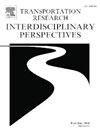在巴基斯坦拉合尔鼓励以快速公交为导向的公交发展的体制挑战和机遇
IF 3.9
Q2 TRANSPORTATION
Transportation Research Interdisciplinary Perspectives
Pub Date : 2025-04-21
DOI:10.1016/j.trip.2025.101431
引用次数: 0
摘要
交通导向发展(TOD)包括围绕交通站点的密集、混合用途和行人友好型发展。在发达国家,快速公交(BRT)通过综合规划和治理刺激TOD,而在发展中国家,基础设施有限、制度薄弱和政策分散阻碍了快速公交系统鼓励TOD的能力。因此,我们的研究旨在了解巴基斯坦拉合尔TOD与BRT相结合的制度挑战和机遇。为此,我们在NVivo 14中对来自土地利用和交通机构的9名专业人员进行了半结构化访谈,并对访谈进行了定性分析。我们的研究考虑了五个影响因素来理解促进基于brt的TOD的制度挑战和机遇:监管框架、制度责任、制度协调、地方专业知识和激励。结果表明,最主要的挑战是缺乏监管框架、职能重叠、缺乏机构协调、政府优先级和政治意愿低、专业知识和领导力有限以及缺乏激励措施。我们的结论是,多个机构有助于土地利用和交通规划;但二者之间的关系和对TOD的影响较弱。我们的研究表明,明确的监管框架、TOD规划、针对TOD的分区、加强机构协调、地方专业知识、强大的政治意愿、专业能力、有远见的领导、有效的公私伙伴关系以及有针对性的激励措施是通过快速公交促进TOD发展的关键。本文章由计算机程序翻译,如有差异,请以英文原文为准。
Institutional challenges and opportunities for encouraging transit-oriented development with bus rapid transit in Lahore, Pakistan
Transit-oriented development (TOD) includes dense, mixed-use, and pedestrian-friendly developments around transit stations. Bus rapid transit (BRT) stimulates TOD in developed countries through comprehensive planning and governance, while limited infrastructure, weak institutions, and fragmented policies hinder the ability of the BRT system to encourage TOD in developing countries. Therefore, our study aimed to understand the institutional challenges and opportunities that stand in the way of TOD coupled with BRT in Lahore, Pakistan. To this end, we used a qualitative analysis of semistructured interviews in NVivo 14 with nine professionals from land-use and transportation institutions. Our study considered five influential factors to understand the institutional challenges and opportunities in promoting BRT-based TOD: the regulatory framework, institutional responsibilities, institutional coordination, local expertise, and incentives. Results show that the foremost challenges are the absence of a regulatory framework, functional overlap, lack of institutional coordination, low government priority and political will, limited expertise and leadership, and absence of incentives. We conclude that multiple institutions contribute to land-use and transportation planning; however, their relationship and influence on TOD are weak. Our study suggests that a clear regulatory framework, TOD plans, TOD-specific zoning, enhanced institutional coordination, local expertise, strong political will, professional capacity, visionary leadership, effective public–private partnership, and targeted incentives are essential to promote TOD through BRT.
求助全文
通过发布文献求助,成功后即可免费获取论文全文。
去求助
来源期刊

Transportation Research Interdisciplinary Perspectives
Engineering-Automotive Engineering
CiteScore
12.90
自引率
0.00%
发文量
185
审稿时长
22 weeks
 求助内容:
求助内容: 应助结果提醒方式:
应助结果提醒方式:


